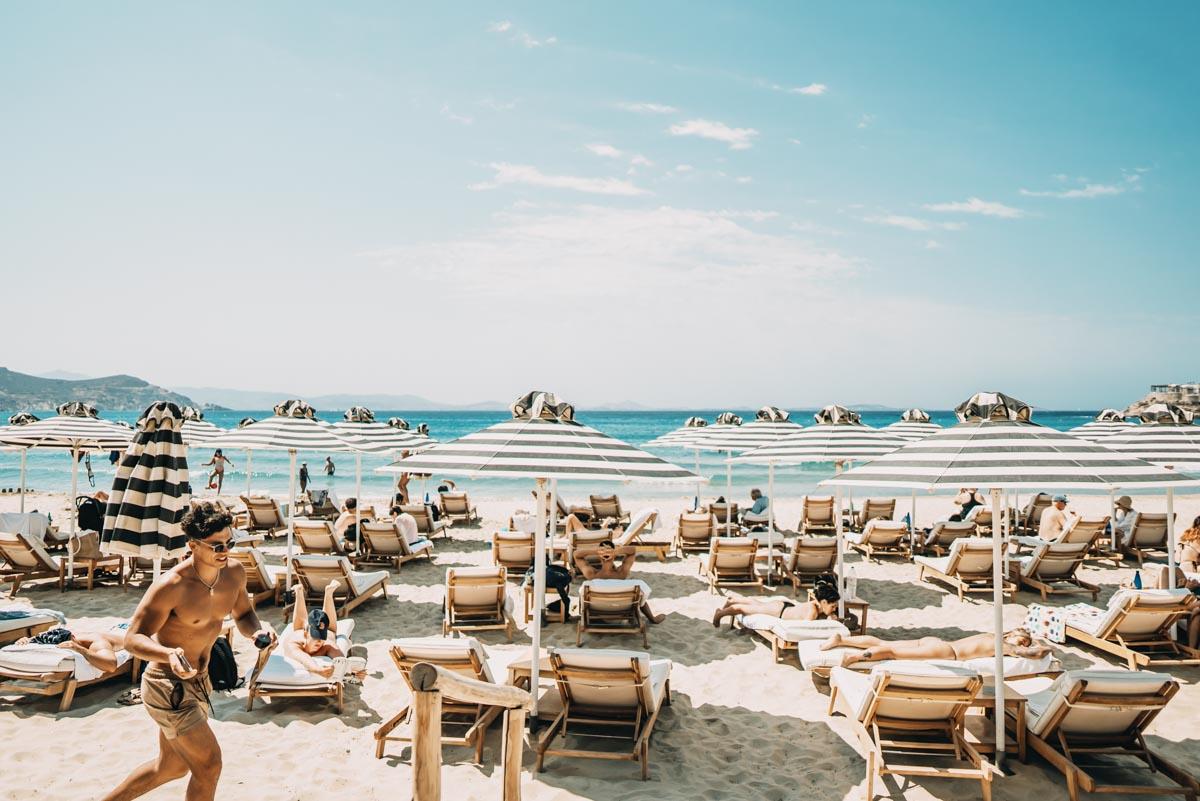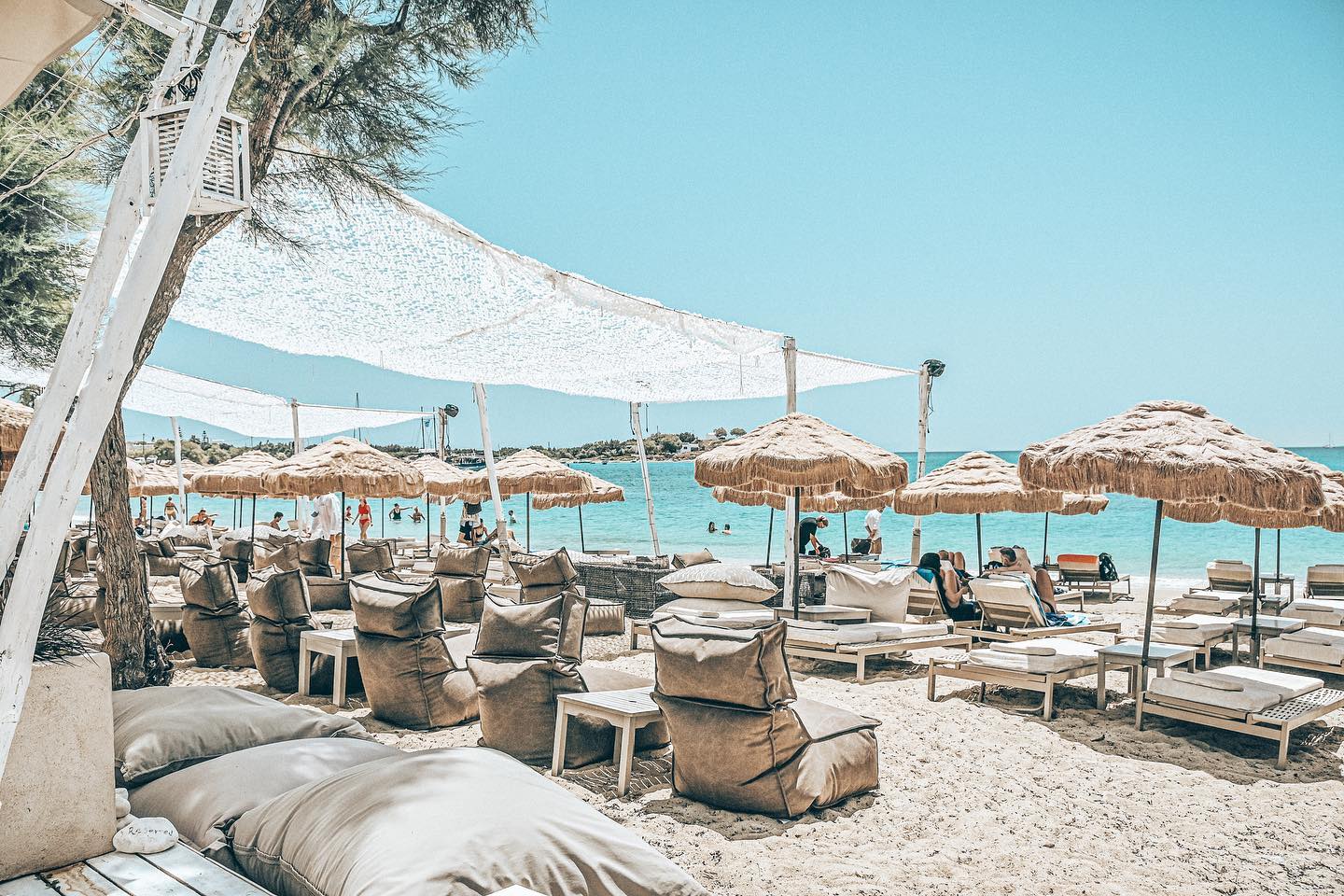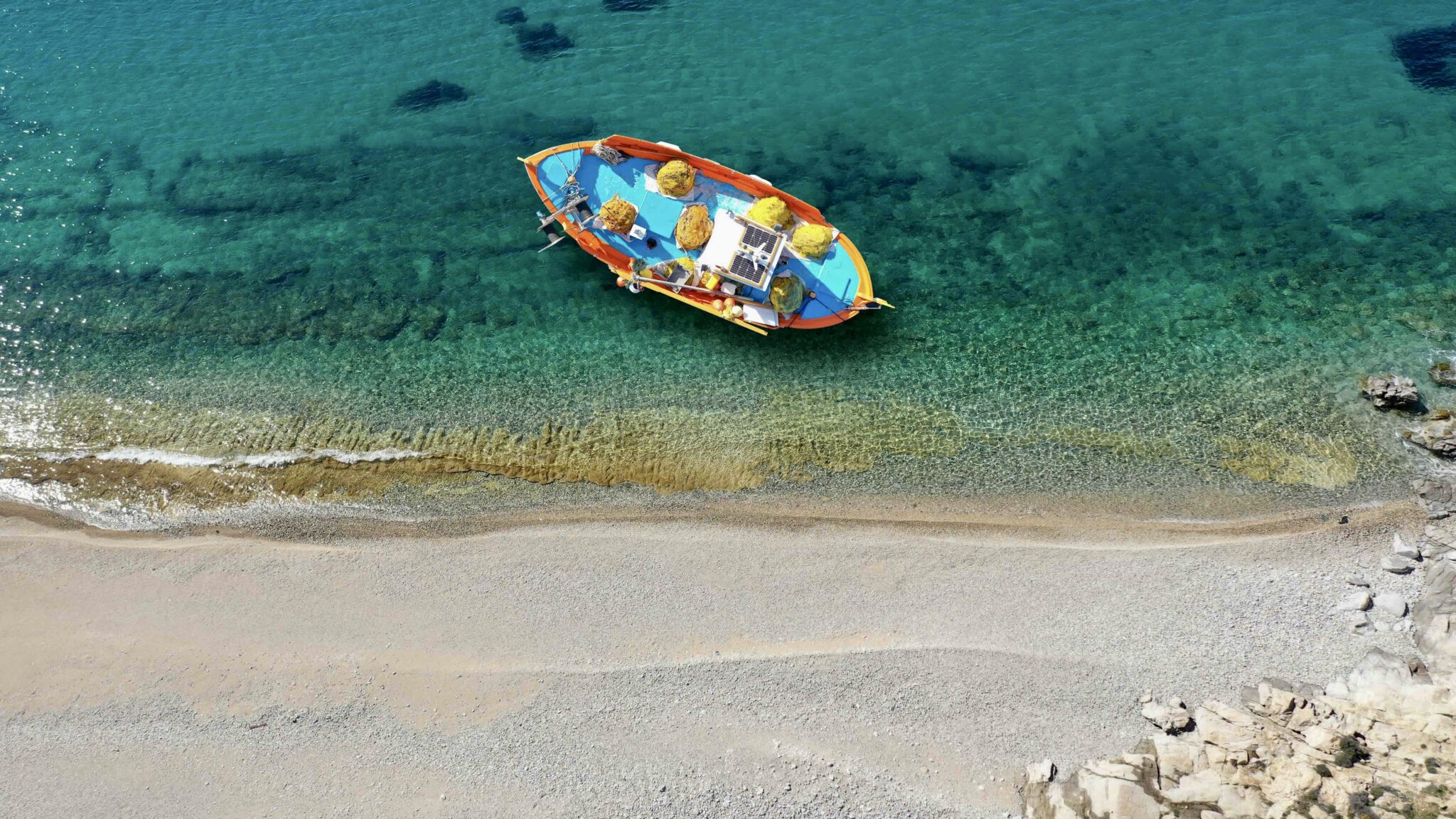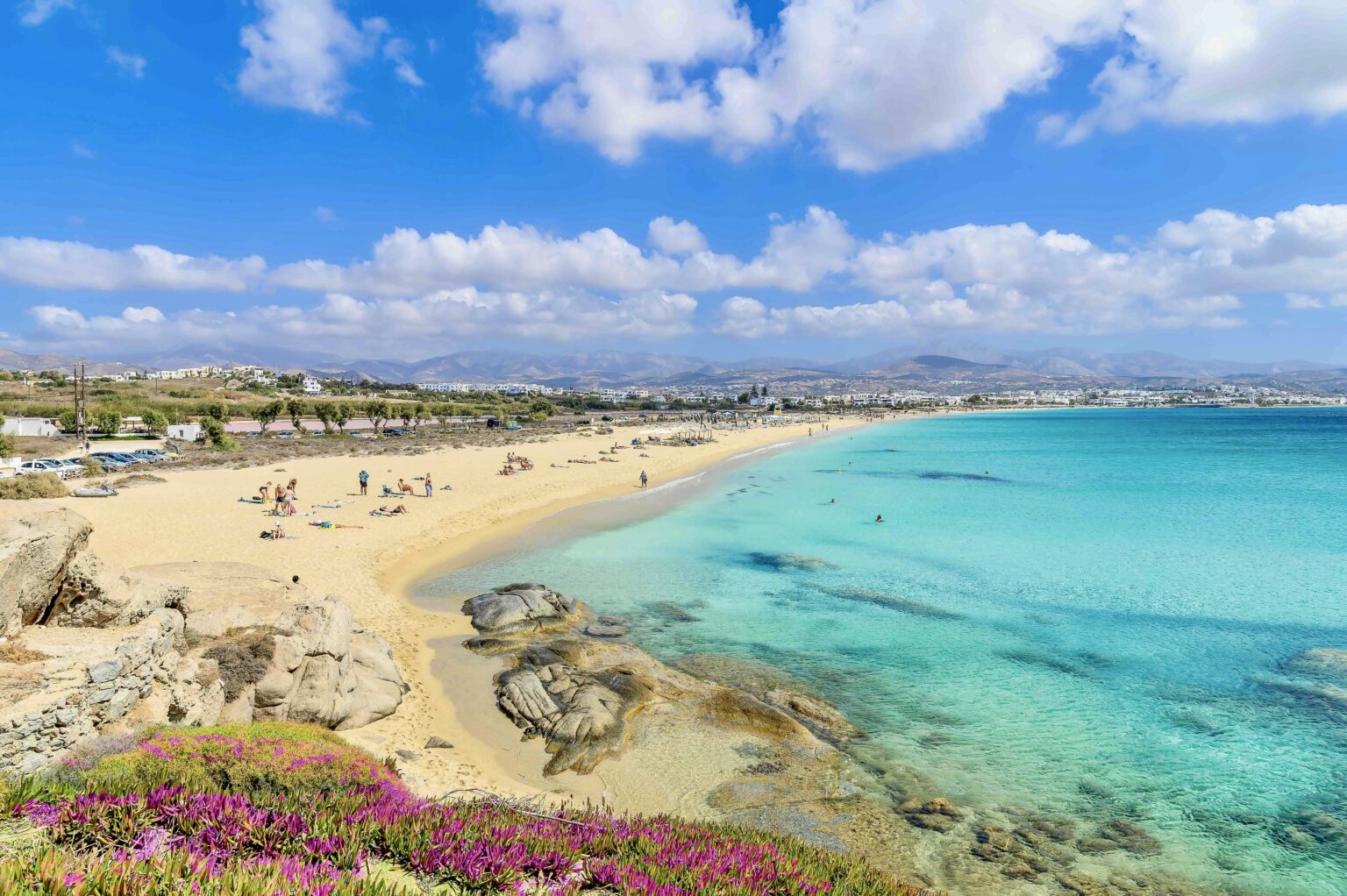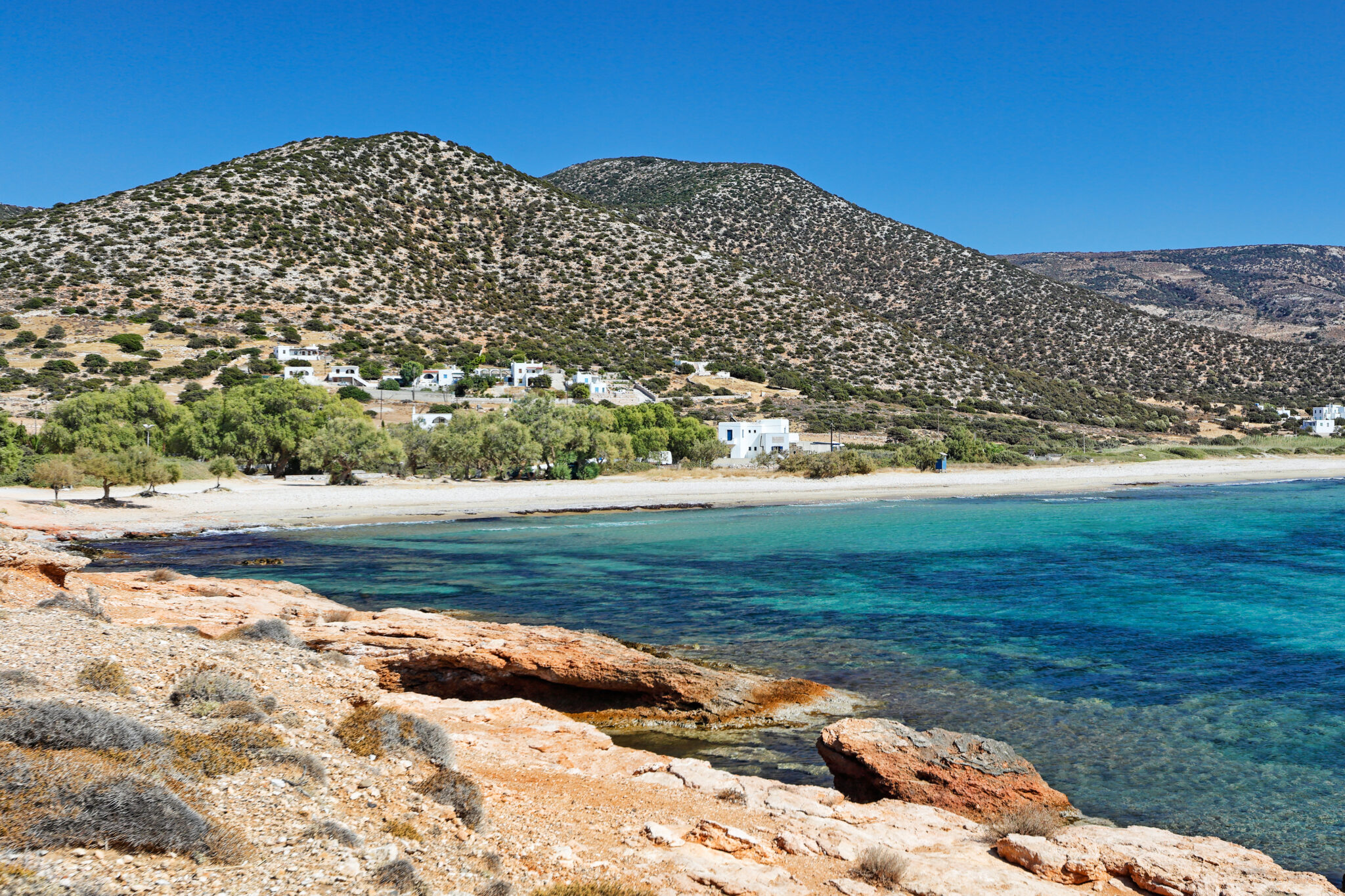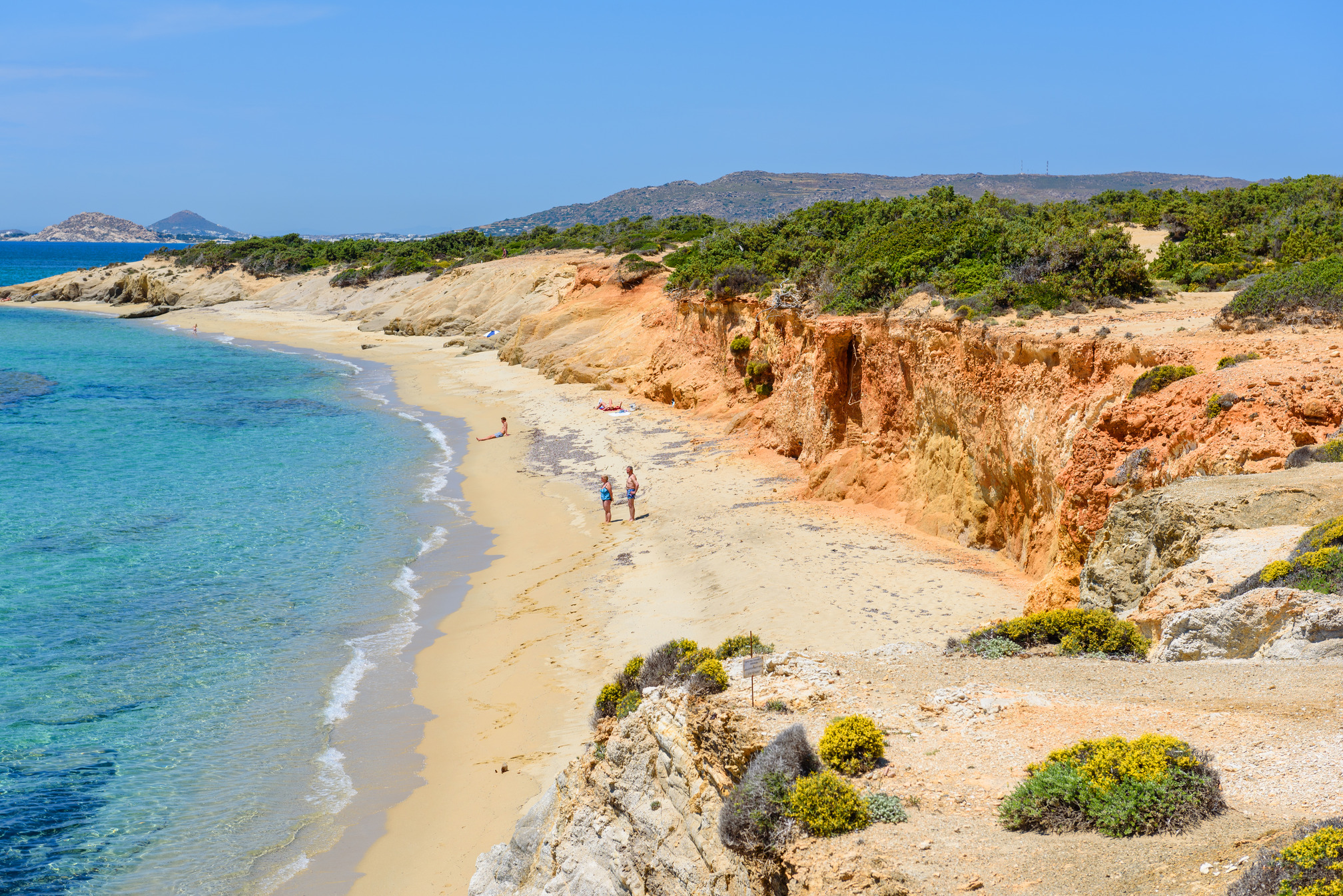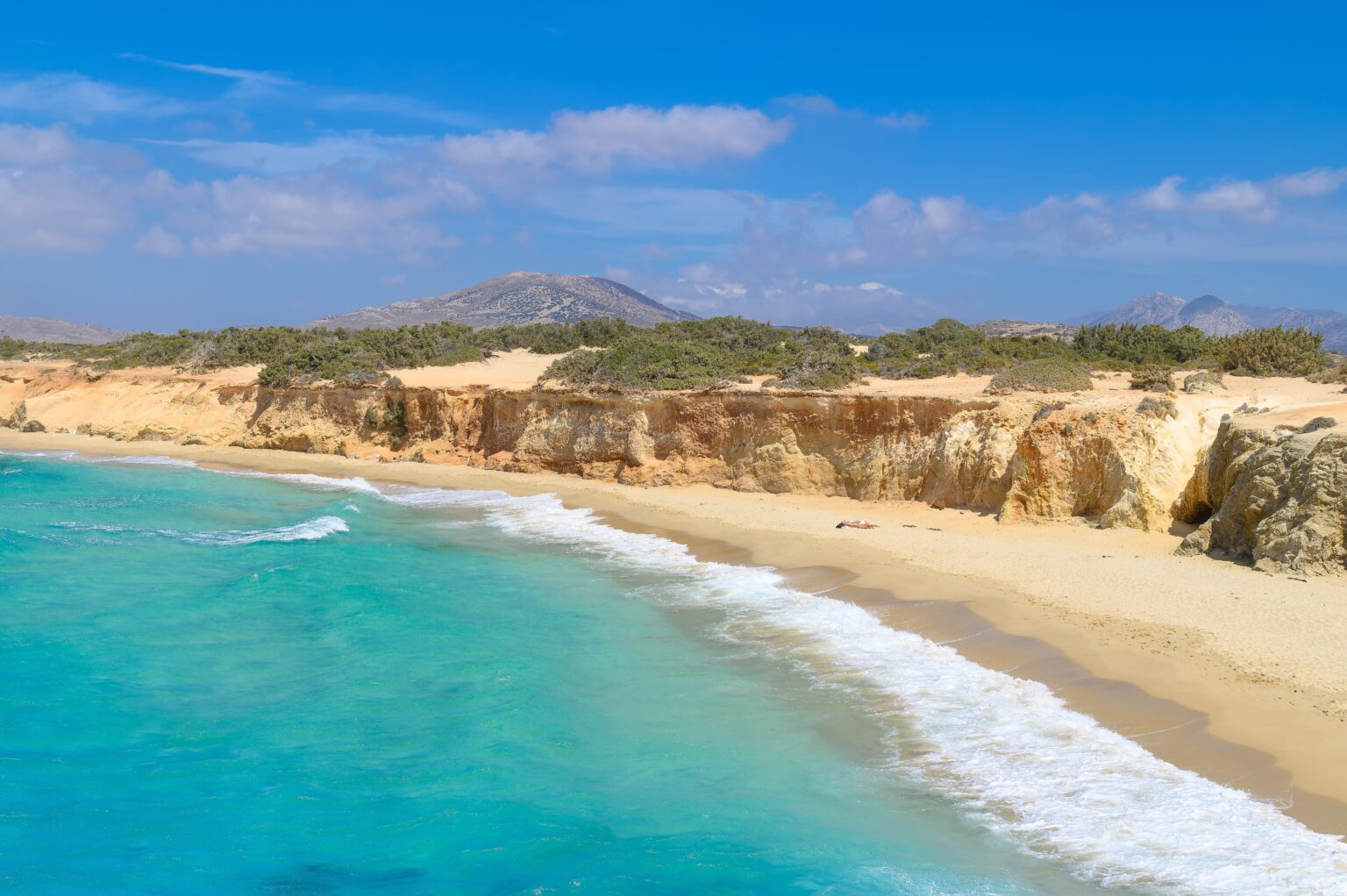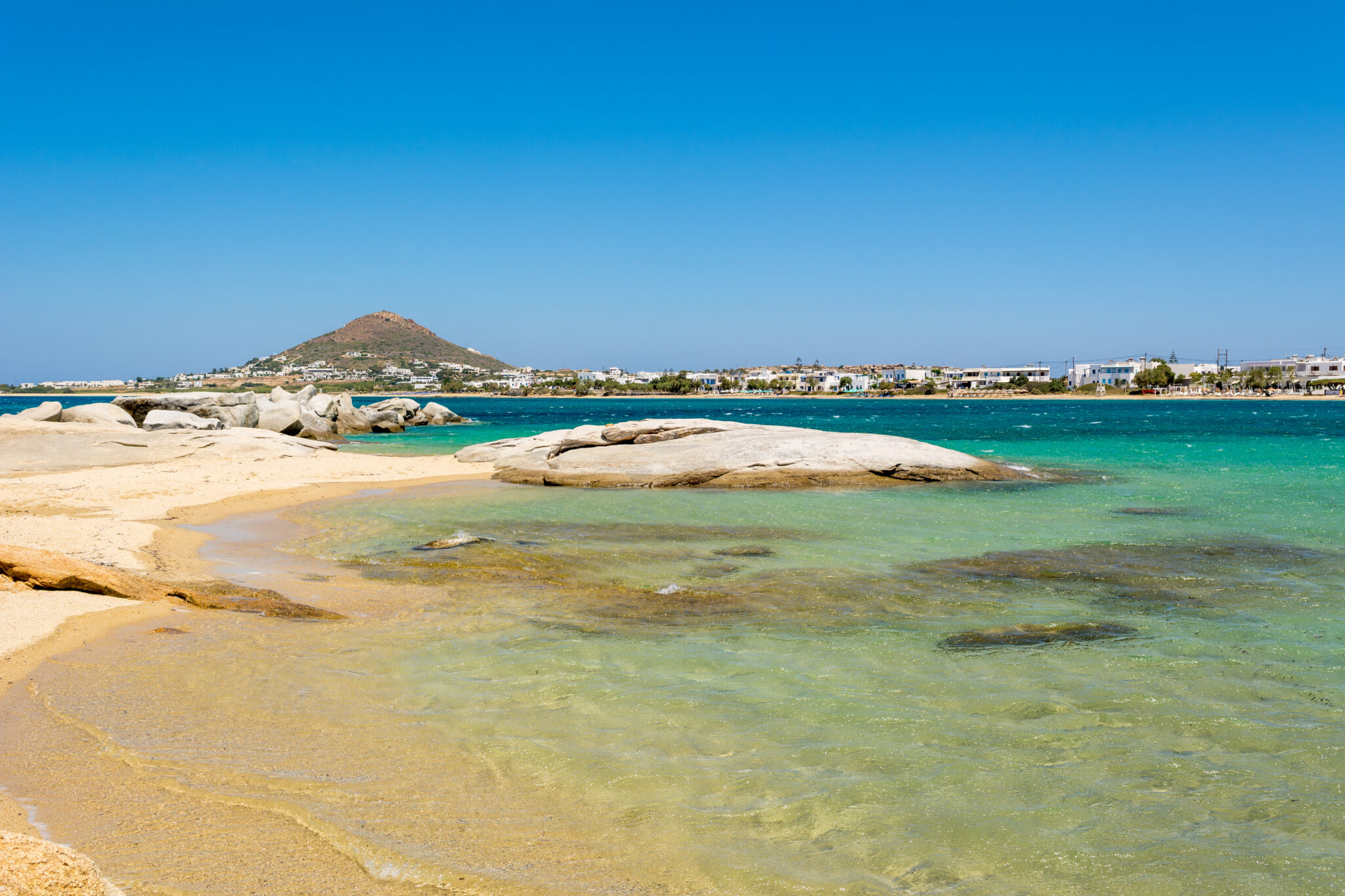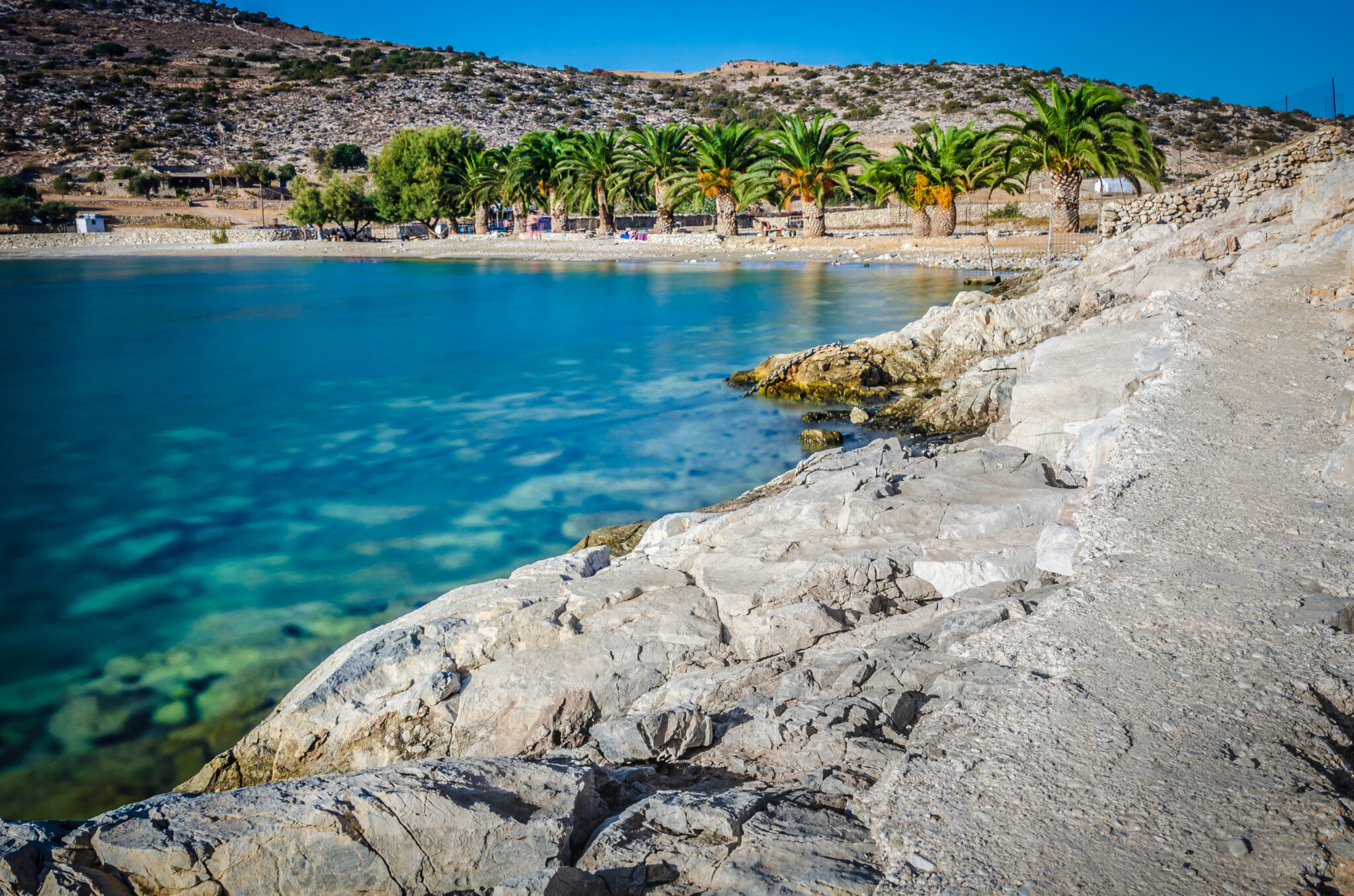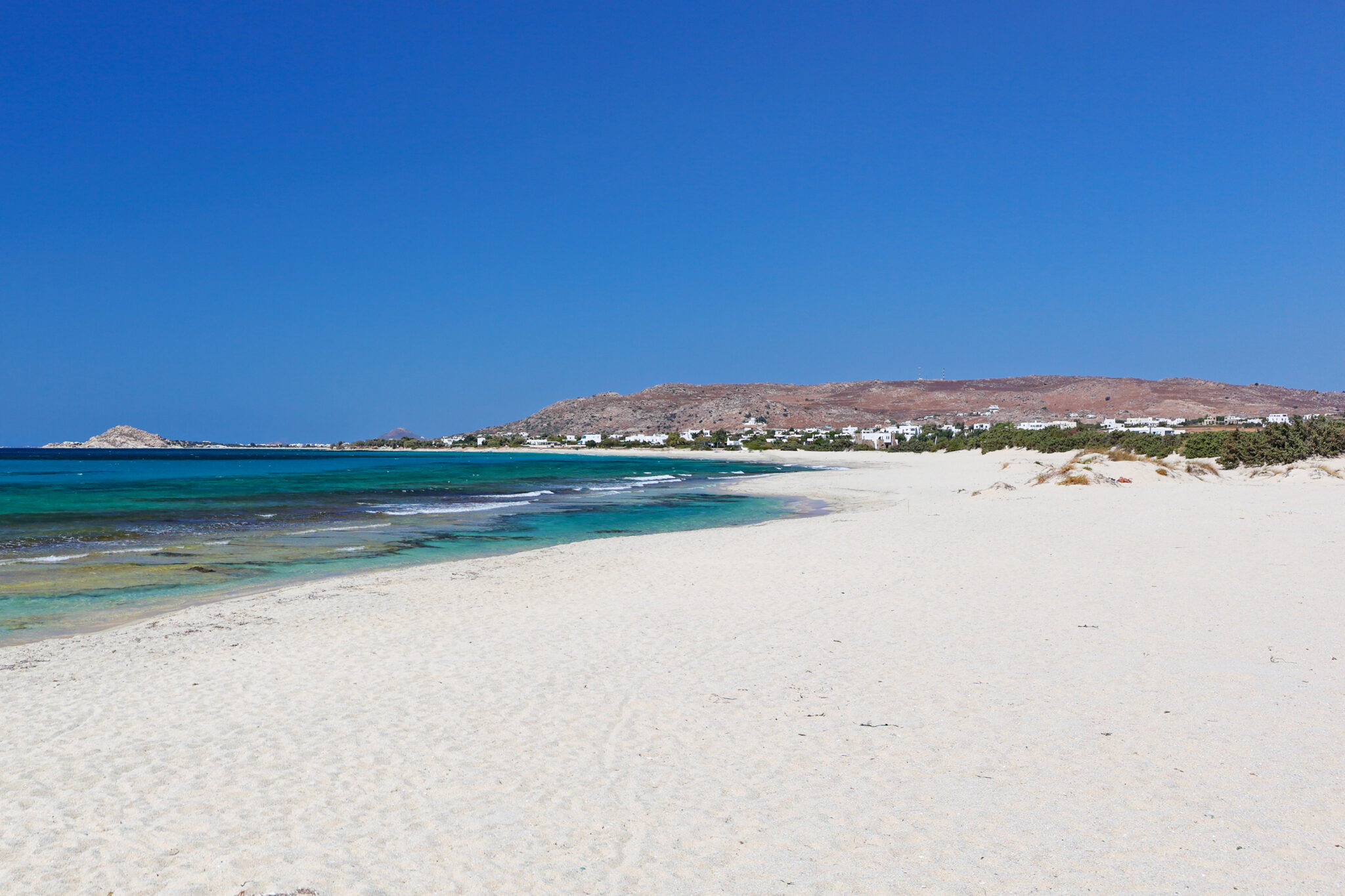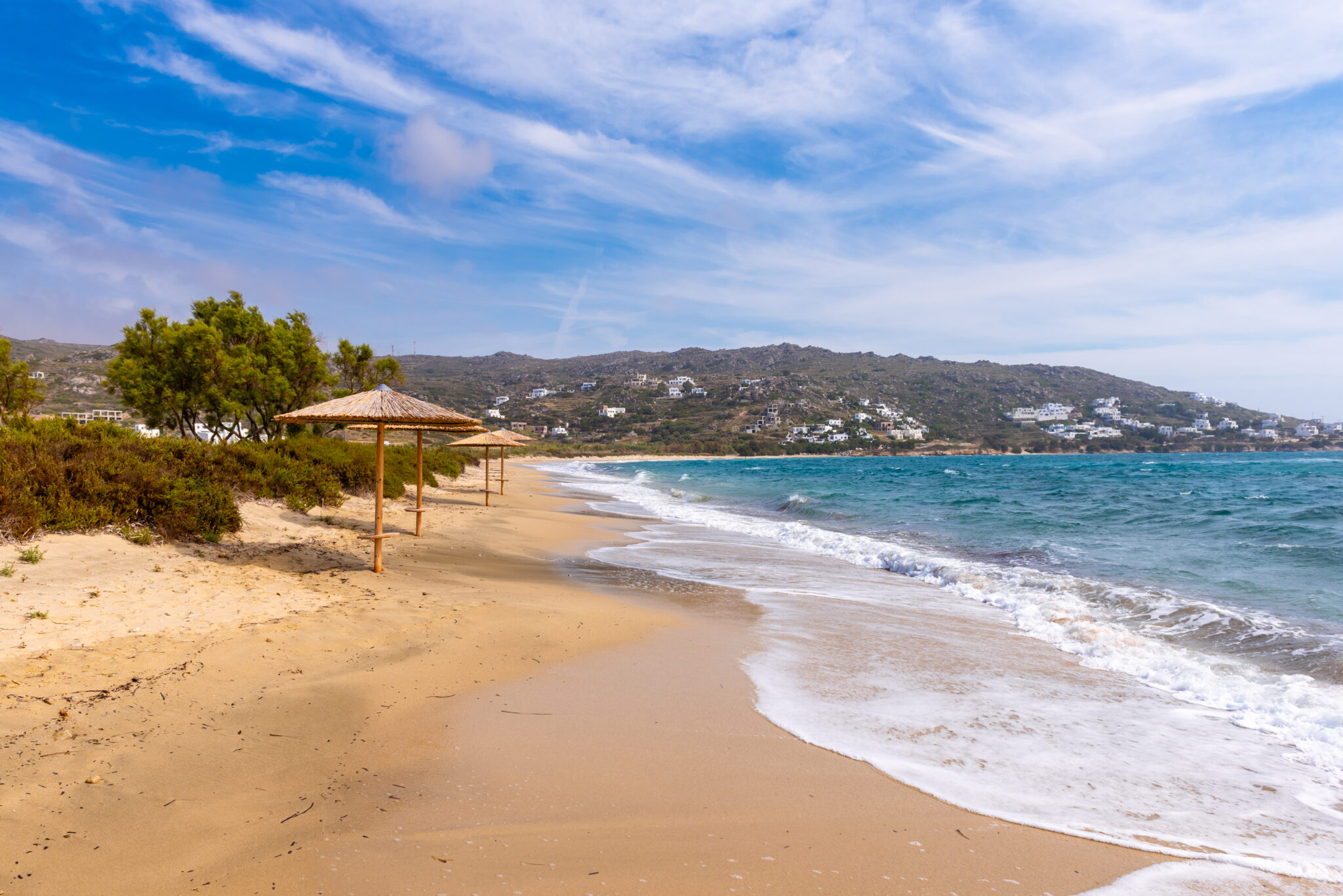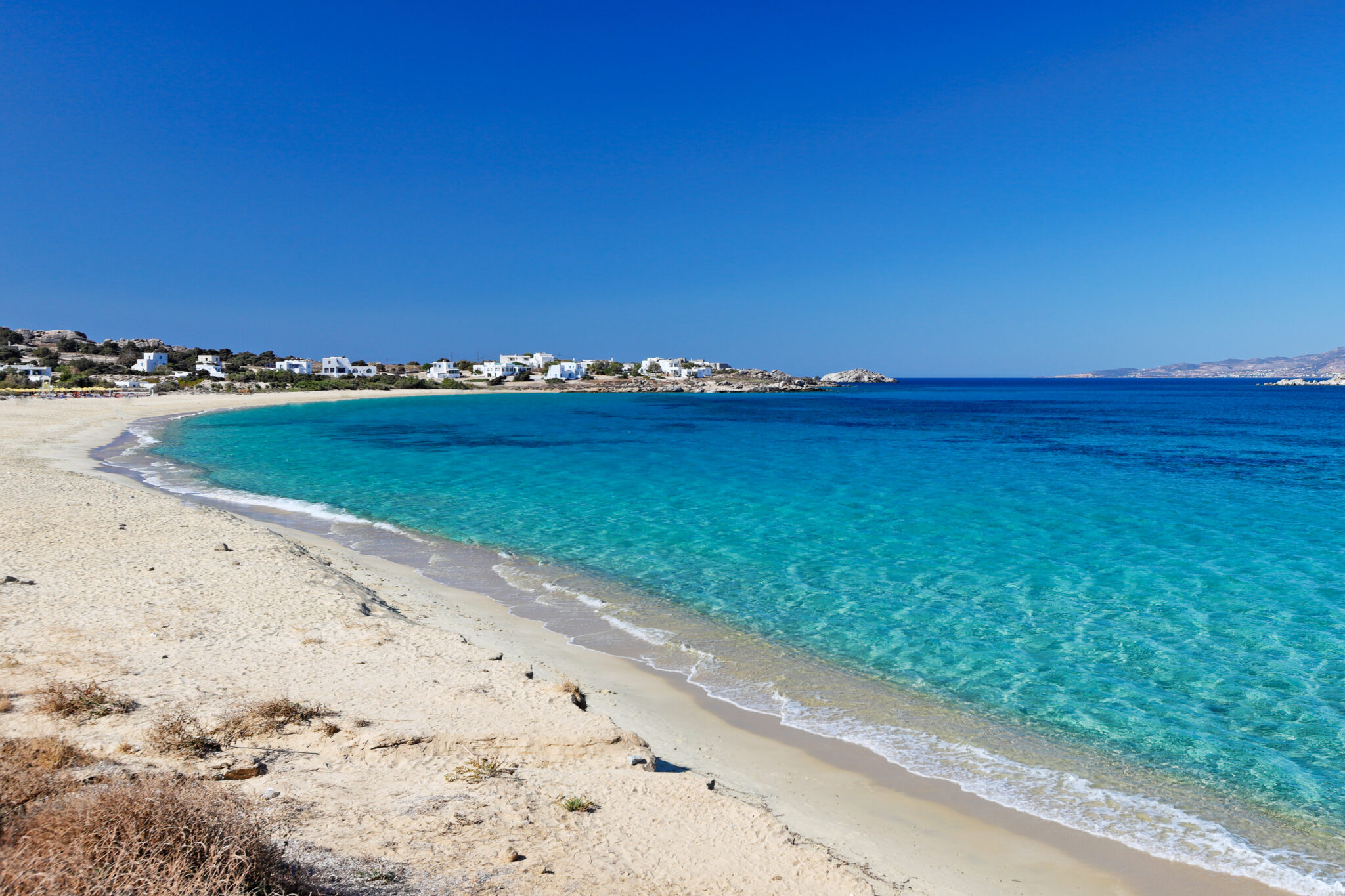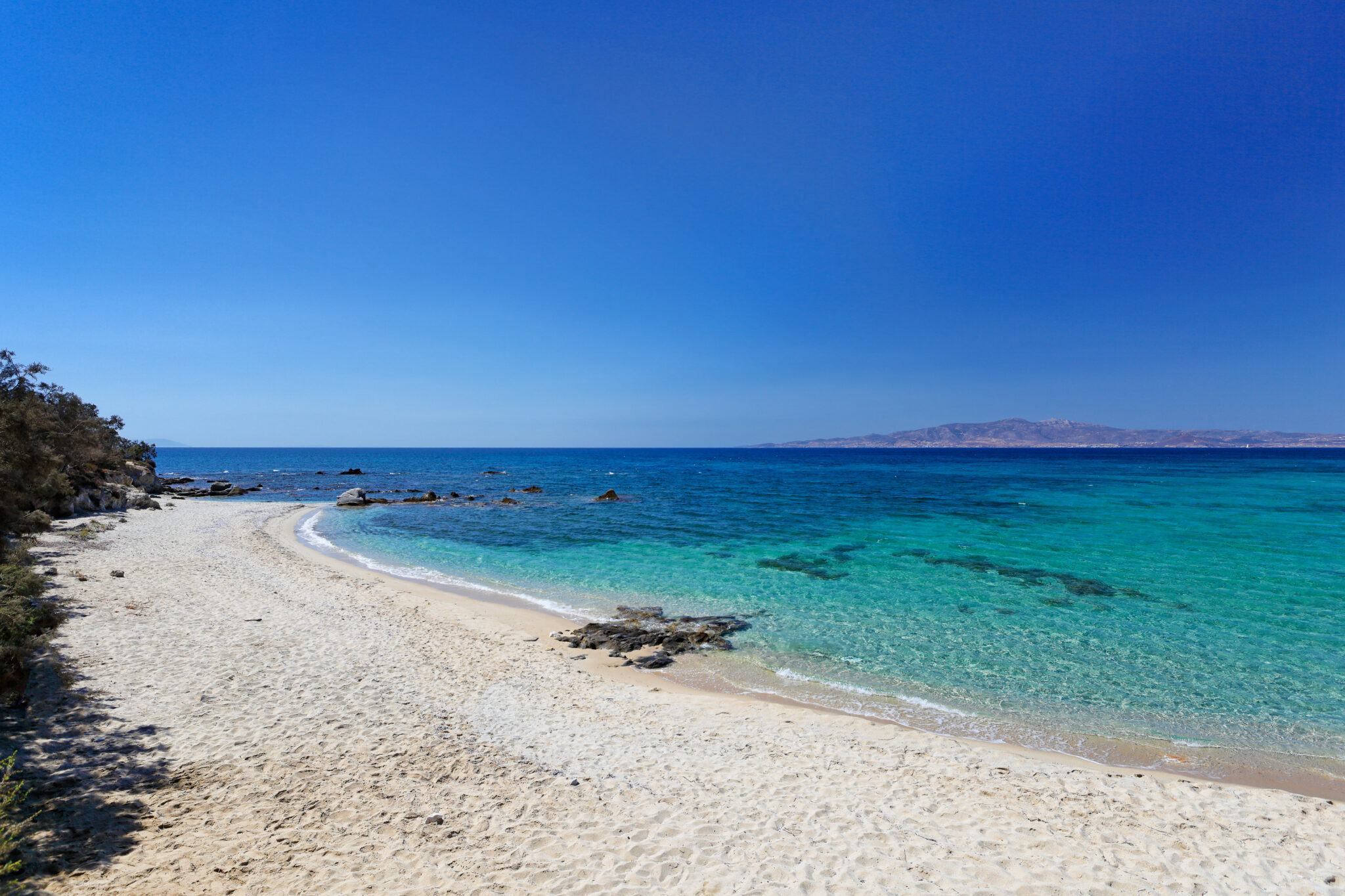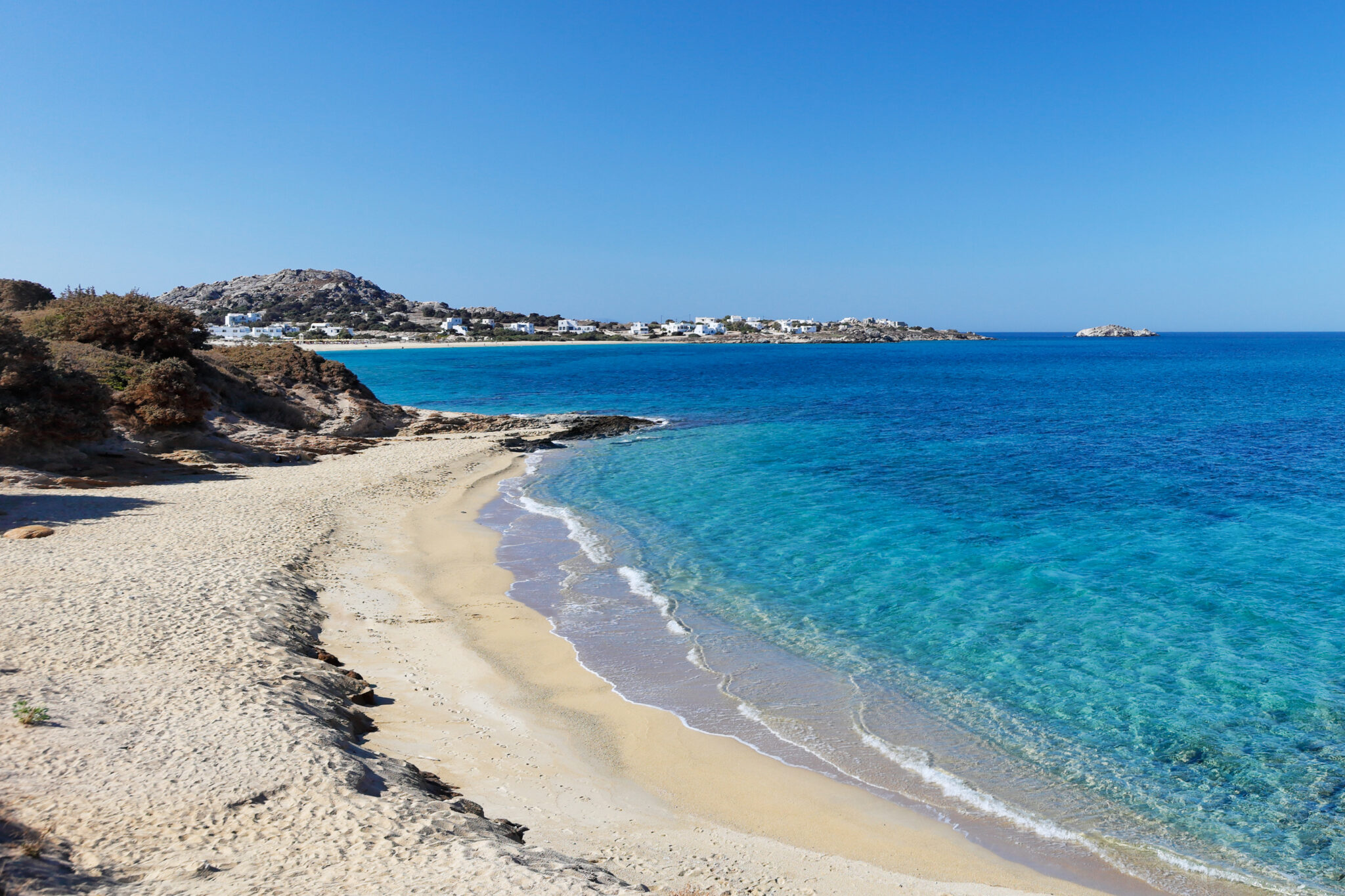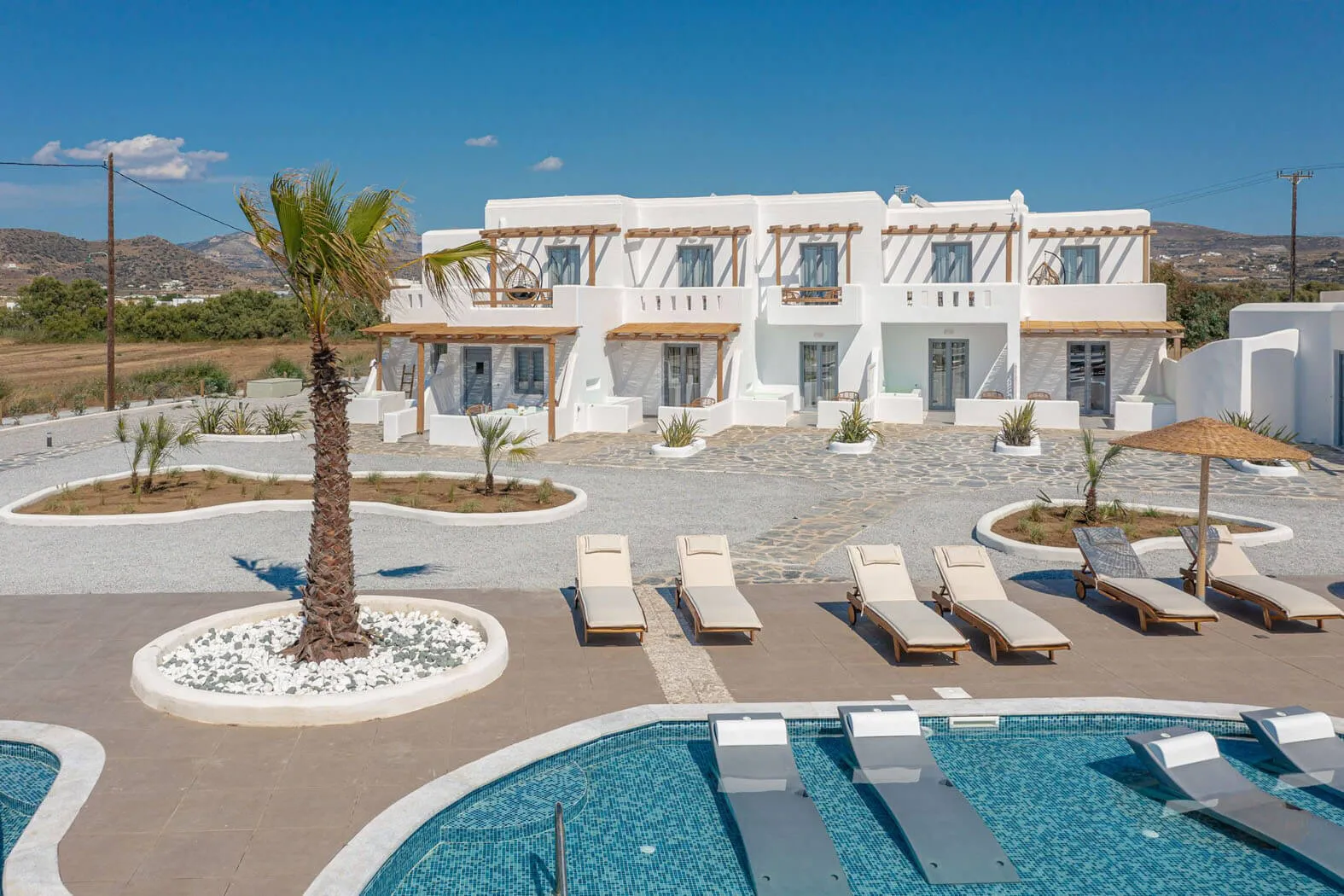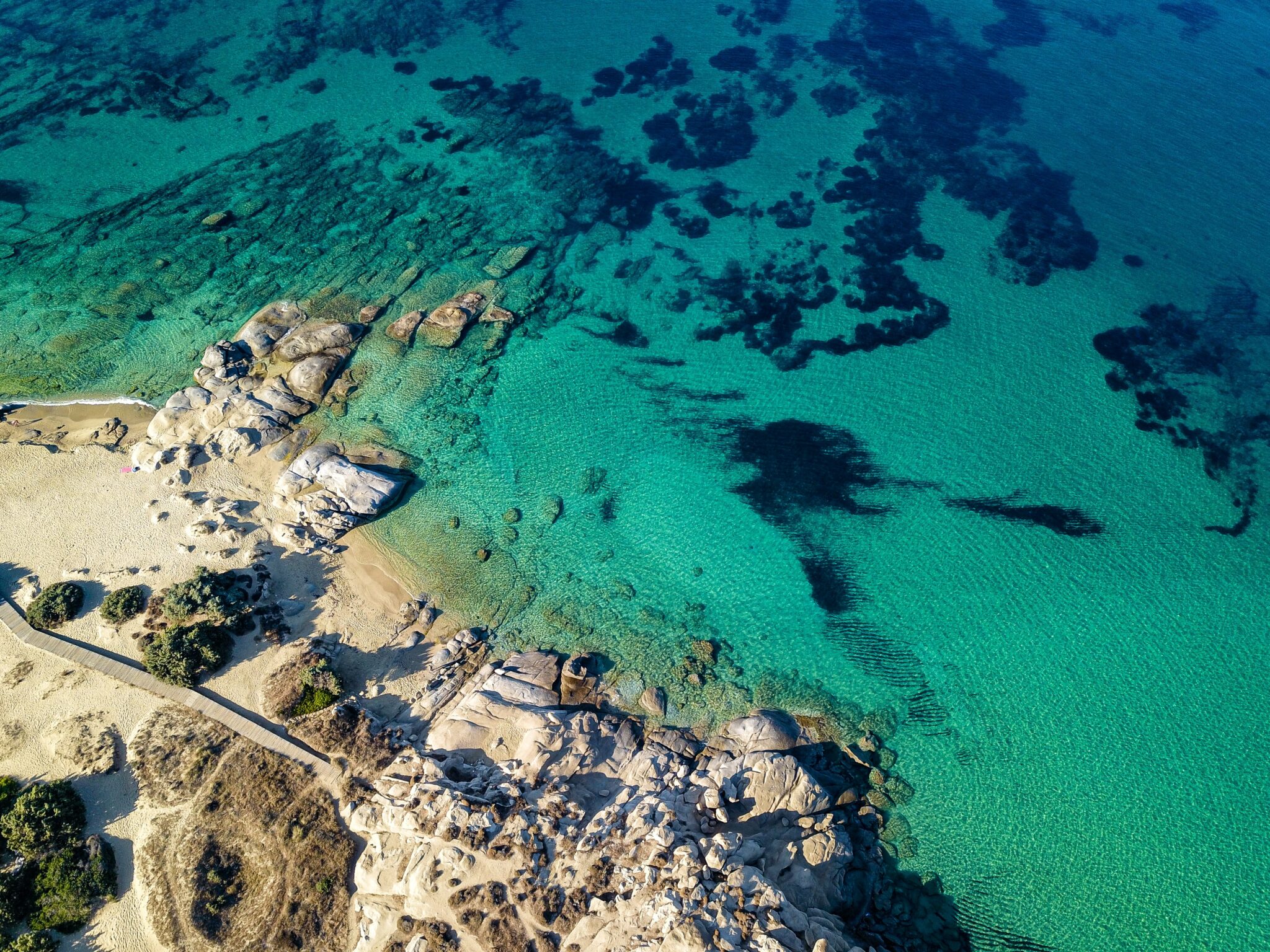Naxos, the largest of the Cyclades, pairs a mountainous spine with a shoreline that feels almost endless. From the marble-white peak of Mount Zas, gullies slope toward an intricate coast where emerald shallows and fine, pale sand repeat in measured cadence. South of the main town, one broad strand runs for kilometers, a steady alternation of turquoise water, gold flecks of silica, and the occasional taverna veranda set just far enough back to let the dunes breathe.
With more than thirty named beaches, the island reads like a catalogue of moods. Mikri Vigla gathers the wind and channels it into a playground for kites, sails, and anyone who measures holiday success in knots rather than novels. Plaka lies further on, organized and sociable, its beach bars offering the easy rhythm of iced coffee in the morning and cocktails by late afternoon. Those who prefer a quieter page can drift east to small coves reached by dusty switchbacks or aim north, where the surf grows a little wilder and the sand is left mostly to itself. What links every shore is the clarity of the water and the sense that each turn in the road will deliver another flawless frame of Aegean blue.


01
Agios Prokopios
Often voted the most beautiful beach on the island, Agios Prokopios is a long stretch of golden sand some six kilometers from Naxos Town. Justifiably popular, the thick sand and sparkling water attract many visitors who love swimming in its protected waters.
Organized, with water sports, beach bars, cafés, tavernas and mini markets nearby, there are still areas of the beach to lay down a towel although there is little shade. There is parking at the northern extremes near to the eponymous chapel but it gets very busy in high season, so maybe take the bus or hire a bicycle.
02
Agiassos
The last beach on the eastern coast, this where Marco Sanudo landed in 1207 to conquer the island from the Byzantines, burning his fleet in the process so that there could be no going back. Sheltered even when the north winds are blowing merry, Agiassos never gets crowded as it is two kilometers long and far from Naxos town.
Completely unorganized with fine sand and a gently sloping seabed, there is a taverna with good local cuisine and excellent views across to Paros above the beach.
03
Aliko
Aliko is the general name for the peninsula that follows after Glyfada beach and it is a dense headland of cedar forest. It includes several sandy beaches and coves such as Aliko, Mikrolimano, Kedros and Hawaii that form as the cliffs plunge into the sea. Kedros is the first beach with a dense cedar backdrop to fine white sand, popular with nudists.
04
Hawaii
Hawaii is next with a difficult access down steep cliffs but fine golden sand and clear waters as a reward for your efforts. There is a canteen above the beach and on the headland an abandoned hotel which has been taken over by graffiti artists. Rocky headlands separate it from Kedros and Mikrolimano, before the most popular, Aliko Beach, as it is sheltered from the winds.
All of the beaches are unorganised and have little shade so bring an umbrella or retreat into the forest at the hottest times of the day. There is a bus stop on the Naxos-Pyrgaki road and parking near the food truck.
04
Azalas
500 meters from Moutsouna on the eastern coast is Azalas, a coarse sand and fine pebble beach. Unorganized, there are some tamarisk trees for shade and views out to uninhabited Makares and further to Donoussa. The water is especially clear and a favorite for fishermen with many small caves and rocky inlets. The nearest facilities are in Moutsouna itself but maybe combine a visit here with a trip to Apeiranthos high above.
05
Agia Anna
One of the resort towns along the southwestern coast, Agia Anna is a continuation of Agios Prokopios with long stretches of sand backed by the main road lined with tavernas, restaurants and cafés. Once the main commercial port, today it has a pretty little marina with fishing vessels and excursion boats that offer round island tours and trips to neighbouring islands.
With beds and umbrellas to rent, the beach is sandy and protected from the worst of the winds. There are watersports operators and a lifeguard, while nudists collect at the far eastern end which is quieter. Easily reached from Naxos Town, the bus drops right off at the beach and there is parking within the village.
A short walk from Agia Anna, just south of the Agios Nikolaos chapel is Maragas, a lovely long strip of sand. The area closer to the chapel is preferred by nudists but there is abundant free space to cater for everyone. Partly organized, there are beds and umbrellas outside the tavernas and bars but there is also shade from trees to the rear. The water is shallow and gradually deepens so the beach is ideal for families.
06
Panormos
One of the most remote beaches on the island, Panormos is sandy with some stones and beautiful clear waters. There are palm trees for shade which lend an exotic air and a small taverna to the rear. Good for when the north wind is blowing, the beach is sheltered for swimming. A small excursion boat runs out to explore Rina Cave and its pristine bay.
07
Glyfada
A stretch of sand where time seems to pause. Glyfada is long, quiet, and backed by dunes, offering uninterrupted views of the horizon. The water is shallow and crystal clear, making it perfect for long swims. Unlike the busier beaches, Glyfada remains blissfully unspoiled, with just a few tavernas nearby serving simple, fresh dishes.
Not far from the beach, the charming village of Kastraki provides more dining options, with local tavernas serving fresh seafood and traditional Greek dishes. Hiking in the surrounding area offers scenic views of the coastline, making it a great spot for those who love nature as much as the sea.
08
Plaka
From its origins as a nudist beach in the 1960’s, Plaka Beach has grown to be one of the most famous beaches in Greece. The longest uninterrupted stretch of sand on the island, the beach has something for everyone. Less crowded than the beaches near town, Plaka has some beds and umbrellas outside the beach bar but for the most part it is unorganised.
The sea is shallow and clear, while at the southern end Orkos is a series of small coves loved by naturists for seclusion.
09
Mikri Vigla
World famous as a wind and kitesurfer’s paradise, Mikri Vigla is on a small headland that juts out into the sea between Orkos to the north and Kastraki to the south. The pure white sand is edged by cedar trees and gentle sand dunes to the rear while the view to the front is over turquoise seas to the islet of Panagia Pathena. Obviously, it is windy out to sea, but the beach itself is sheltered on the southern stretch known as Sahara.
Fully organized, there are umbrellas and beds to rent as well as watersports equipment hire and there are a couple of good tavernas.
10
Kastraki
The beach right after Mikri Vigla, Kastraki is long and unorganised although there are a couple of tavernas. It has kept its low-key, tranquil status and is ideal for those who like their island beaches undeveloped and untouched.
Even in high season the beach is never crowded, and the fine sands are a glorious backdrop to the views over the blue-green Aegean towards Paros.
11
Orkos
Between Plaka and Mikri Vigla, Orkos unfolds in a string of quiet sandy coves, divided by rugged rock formations. There’s a sense of discovery here, a balance of stillness and movement. The northern stretch draws kitesurfers, where the wind stirs up just enough energy, while the southern side stays calm, its waters smooth and inviting.
No beach bars, no distractions—just soft sand underfoot, salt in the air, and the rhythmic pulse of the waves.
Read more:



